What’s in Your Shed? Somerset farmers spill the beans
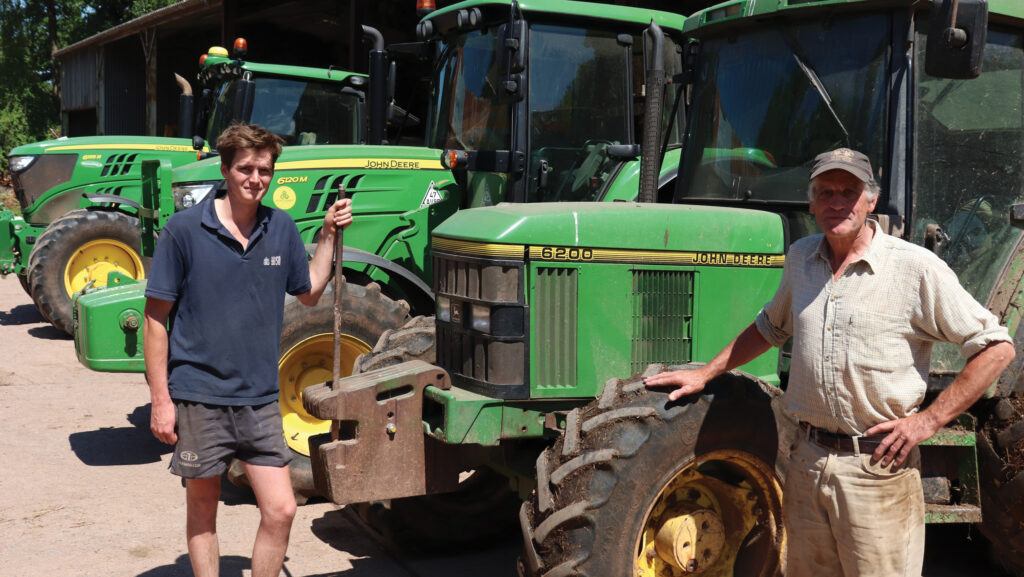 Father and son team Martin and Michael Waldock run a three-strong Deere tractor fleet © Andrew Faulkner
Father and son team Martin and Michael Waldock run a three-strong Deere tractor fleet © Andrew Faulkner Working to a tight budget, Somerset farmers Martin and Michael Waldock aim to buy their kit well … and sell it even better. Andrew Faulkner gets the measure of the mixed fleet.
See also: Direct drills revisited: Mzuri Pro-Til 3T out, Avatar in
Business facts
- Farm size: 120ha of owned land, plus a further 80ha rented about 8 miles from the main farm. Contract drilling on another 200ha
- Cropping: Wheat, oilseed rape, peas, beans and forage maize
- Stock: 200 dairy steers on ‘bed and breakfast’ agreement
- Soil type: Easy working sandy loam
- Staff: Martin and Michael Waldock
How did you get started?
Martin: Via a circuitous route. My father had a small 30ha farm on Exmoor, and, after leaving school, that’s where I started out.
However, it quickly became apparent that father and I couldn’t work together. He said there wasn’t room for the both of us, and, putting it bluntly, he certainly wasn’t going anywhere.
So, off I went, initially to an activity centre in Devon, before heading up to Hampshire and taking on a complete weed control franchise based near Winchester.
The reality, of course, is that father and I got on much better once I’d left the home.
Through the 1990s, alongside running the weed control business, I also dabbled in property development in the Winchester area – buying houses, doing them up and then selling them on.
Back then it wasn’t unusual to buy a house for £60k and then move it on 18 months later for £160,000.
It was building up capital in this way that eventually enabled me to finance my own 120ha holding, Hill Farm, which we bought in 2007, and then, three years later, take on the tenancy of another 80ha at Dyers Farm, Fitzhead.
Before buying in Somerset, I’d looked at other farms all over the UK and even considered France, New Zealand and South Africa, but ironically I’ve ended up back in Exmoor, just down the road from where I started out.
Michael: My path was more conventional than Dad’s. Left school, worked on farms and mines in Australia and New Zealand, degree at Cirencester…and then back home just in time for Covid.
That was four years ago, and I haven’t left.
How brand loyal are you?
Martin: We’re not. Having to fund the purchase of the farm has meant money for machinery investment has always been limited.
So, we buy whatever will do the job at the right price, pretty much irrespective of brand. I was once told that, if you can afford to write a cheque out for your depreciation at the end of the year, then you’re doing OK.
And that’s been my mantra ever since.
We did run Masseys for years, until Agco made a complete hash of its MF dealerships in this area. Bigwoods at Taunton closed in 2021, and then Compass Tractors at Bridgwater stopped doing MFs, so this left a gaping Massey hole.
It’s the main reason we eventually switched to Deere, because that gave us a choice of Hunt Forest at Nether Stowey or Masons Kings at Exebridge, which are both less than a 30min drive from here.
A machine is only as good as the man who fixes it, and that man needs to be close.
Favourite dealer?
Martin: Even though Hunt Forest and Masons Kings are both excellent, our favourite is probably Affordable Farm Machinery at Dulverton, a family business run by Jeremy and Angela Andrews.
Latest purchase from the Andrews was a 27-year-old Matbro TR250, which had been underwritten for a JCB dealer and we took “unwashed” for £8,000.
There’s no leg lifting with Jeremy. He’s straight, is happy to do a deal and will sort you out if something fails.
Favourite piece of kit?
Martin: The 4m John Deere 750A direct drill would be my pick. It places the seed perfectly, takes very little power to pull and isn’t prohibitively expensive.
We bought our 2016 version a couple of years ago for £45,000 from a Scottish regen farm that was moving to a larger machine. It was a private deal, all done by Michael over a WhatsApp video call.
Since buying the 750, the only major cost was £5,000 to upgrade to ProSeries seed boots.
These are much tougher and ideal for stitching herbal ley seed into established grassland – SFI work on contract, which is an expanding part of our business.
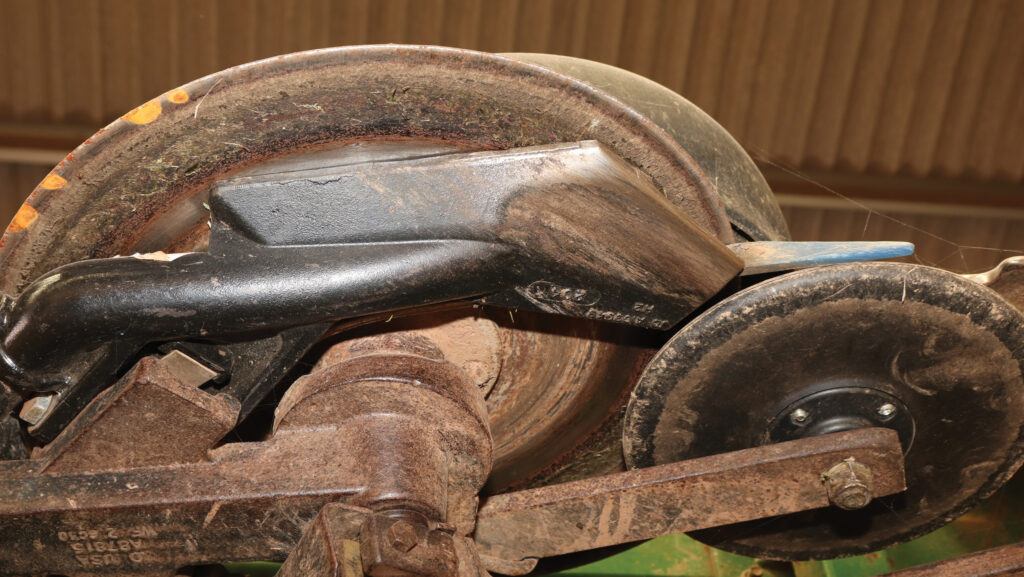
© Andrew Faulkner
Michael: Mine would have to be the Lucas G Castor feeder/bedder, just because of the work it does and time it saves. If the Castor is down for a week, it’s a nightmare.
The 17-plate 6155R AutoPowr is also a favourite. At £51,000 two years ago, it was over our budget, but we needed a tractor with isobus for the 750A and enough power to pull the 3m Mzuri.
To fund the 7,000-hour 6155 from Masons Kings, we sold a couple of Masseys – a 6290 and 6490 – privately, and then subsequently had it chipped to over 220hp.
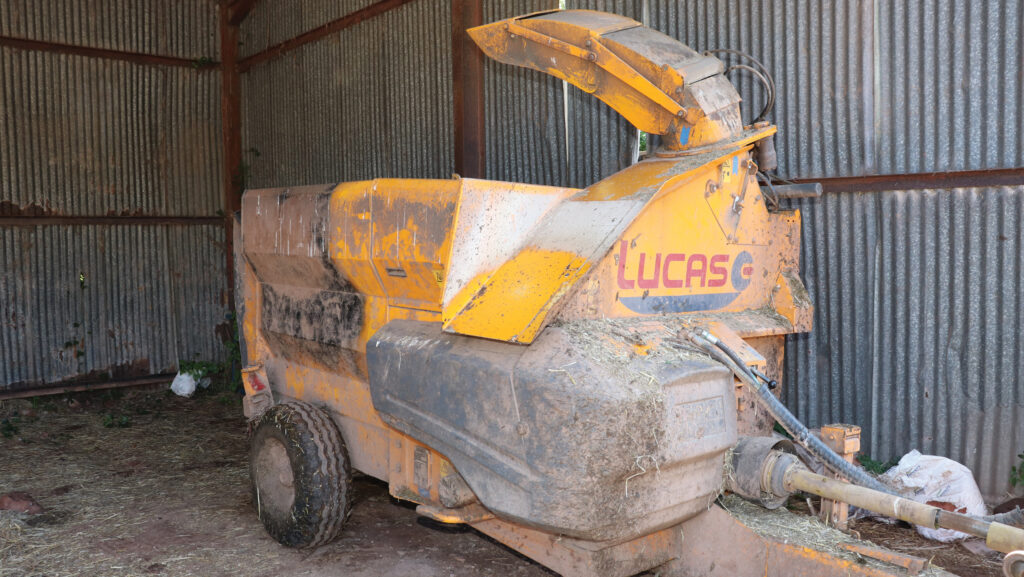
© Andrew Faulkner
Least favourite piece of kit?
Martin: Thankfully, it’s been gone for a couple of years now, but our previous prime mover, a Massey 6490, was an absolute heap of sh*t. We paid £18,000 for it in 2016/17 and simply bought a wrong ‘un.
It was gutless, uncomfortable and regularly boiled its backend oil. The front suspension never worked, and it went through a couple of hydraulic pumps as well as a steering pump.
The final straw came when it broke its first gear in half.
In all, we probably spent about £20,000 on it. Not my best buy, for sure.
Latest purchase?
Michael: We’re replacing our 11-year-old Mzuri Pro-Til 3T drill using the 60% FETF grant. Other than a stubble rake, the new Pro-Til will be the first new machine we’ve bought and also the first with grant funding.
Design wise, it’s pretty much the same as the old one, although it does have a bigger hopper and swivelling front discs.
We like the Mzuri, as we believe we still need a tine in our system. We have no cultivation equipment, so we effectively operate this drill like a cultivator.
For example, we’ll use it to direct drill maize into a mucked field, saving on the cost of ploughing and working down.
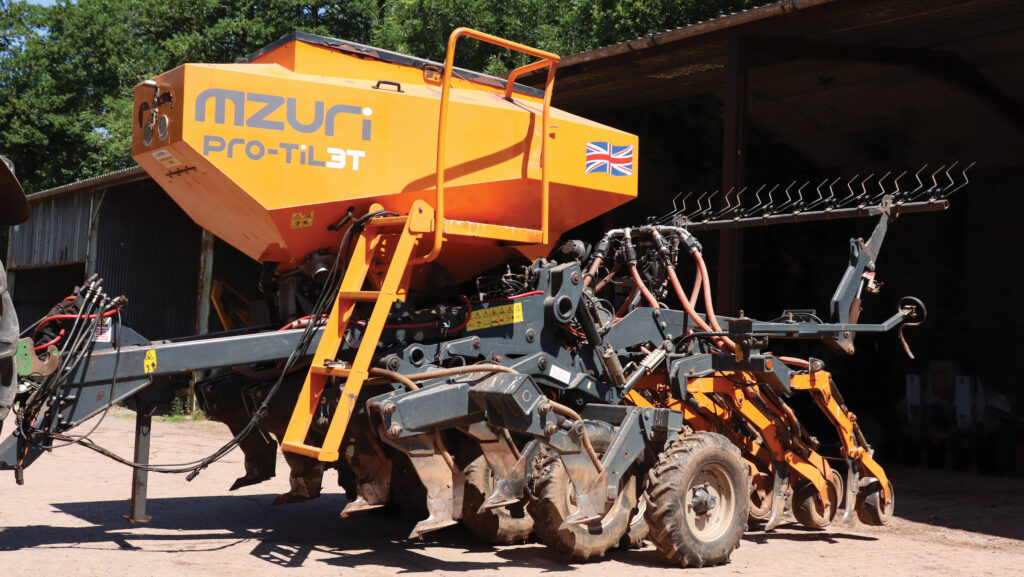
© Andrew Faulkner
Oldest machine still at work?
Martin: That’ll be the 38-year-old Matbro Teleram 40, which still feeds/beds the cattle every day. We paid a timber yard £1,500 for it 15 years ago, when it was showing 10,000 hours.
We later discovered that the previous owner to the timber yard had also sold it with 10,000 hours, so we’ve no idea how much work it’s actually done.
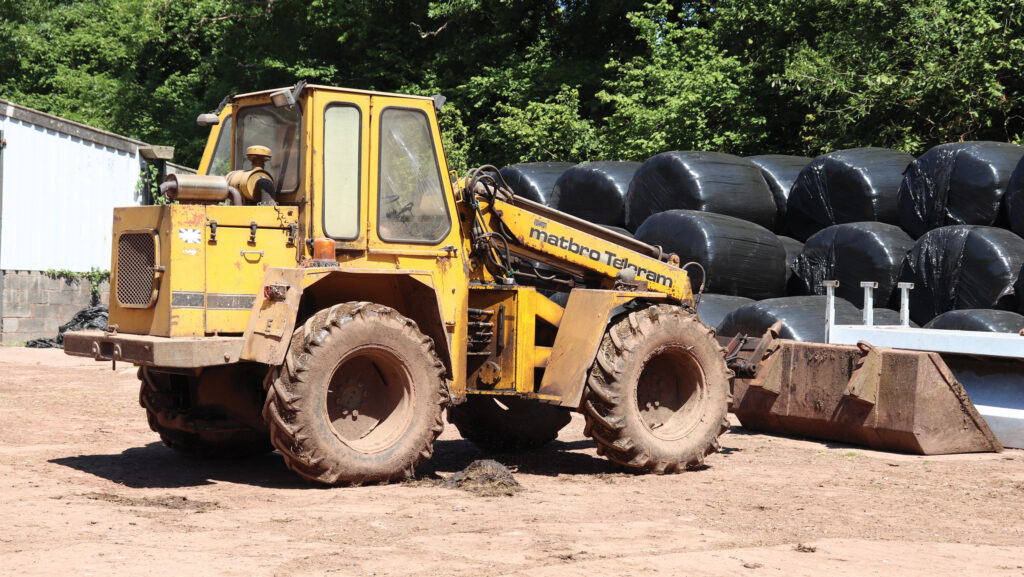
© Andrew Faulkner
How long do you keep your machines?
Michael: There’s no fixed rule. We hang on to machines until they become uneconomical to repair or are regularly unreliable.
Fortunately, we’ve got a well-equipped workshop and are capable of doing a lot of the repairs ourselves – engines, gearboxes etc.
Next on your wish list?
Michael: A couple of 12t Richard Western trailers with hydraulic tailgates and flotation tyres would be nice. However, at £25,000-plus for a new one, they’ll have to stay on the wish list for now.
A tidy second-hander would do us, but finding a decent used trailer at the right money is difficult; values just don’t drop.
We may end up on a trailer sharing arrangement with a local dairy farmer, switching between silage for him and grain for us.
Biggest machinery mistake?
Martin: It’s quite a list – from someone smacking a loader into a wall and bending it, to trying to squeeze a 6m set of rollers through a 15ft gateway and taking out both gateposts.
Particularly annoying was driving a trailer full of beans for eight miles between farms with a partially open tailgate, and, as a result, sprinkling out about 2t of the cargo along the way.
I was known locally as Mr Bean for the next 12 months.
Most expensive repair bill?
Michael: Again, it’s back to our least favourite machine, the MF 6490. When it broke its first gear, part of the cog fell into the gearbox and damaged several others.
Even though we did some of the work ourselves, the parts bill still came to about £8,000.
Priciest spare part?
Michael: It’s the little things that are often the most surprising, such as £190 for a tiny microswitch for the John Deere AutoPowr scroll wheel. It’s ridiculous.
We were also quoted £600 by Claas for a set of nylon wear strips for the Lexion’s feed elevator, so we ended up buying a couple of sheets of nylon for £50 apiece and cutting them out ourselves.
Best invention?
Martin: We’re more fixers than inventors, although I am particularly proud of a land-levelling bar that I knocked up several years ago. Michael also built a flip-up grain store door at a fraction of the cost of a roller shutter.
What couldn’t you live without in the workshop?
Martin: It’s hard to pick out a single item, as we wouldn’t want to be without the mig welder, plasma cutter or any of the Milwaukee power tools.
We spend a huge amount of time in the workshop, so perhaps the heating is the most important bit of the lot.
Favourite and least favourite jobs?
Martin: Harvesting crops on a sunny day with no breakdowns tops my list. Even better is sitting at the edge of the field with a cold drink and watching Michael do it. The worst job is blowing off the combine in the autumn.
Michael: Harvesting is my favourite, too, although it certainly wasn’t when we were running the two old MFs. We had to have two, as only one would be operational at any given time.
Least favourites are pulling blackgrass and manually bedding down the cattle – the reason why the Castor is my favourite machine.
What’s your everyday farm transport?
Michael: We’ve been using a 22-year-old, 100,000-mile Toyota Hilux, which we bought for £2,000 in 2022, although I’ve recently upgraded to a relatively rare and even older short-wheelbase Land Cruiser Colorado.
It’s mint and, at £1,400, was too much of a bargain to miss out on.
Martin: My transport is even older – a 1930s Alvis 12/50. I drive it around the farm, but more importantly it’s my regular ride to the pub, where I drink Somerset-produced apple juice, of course.
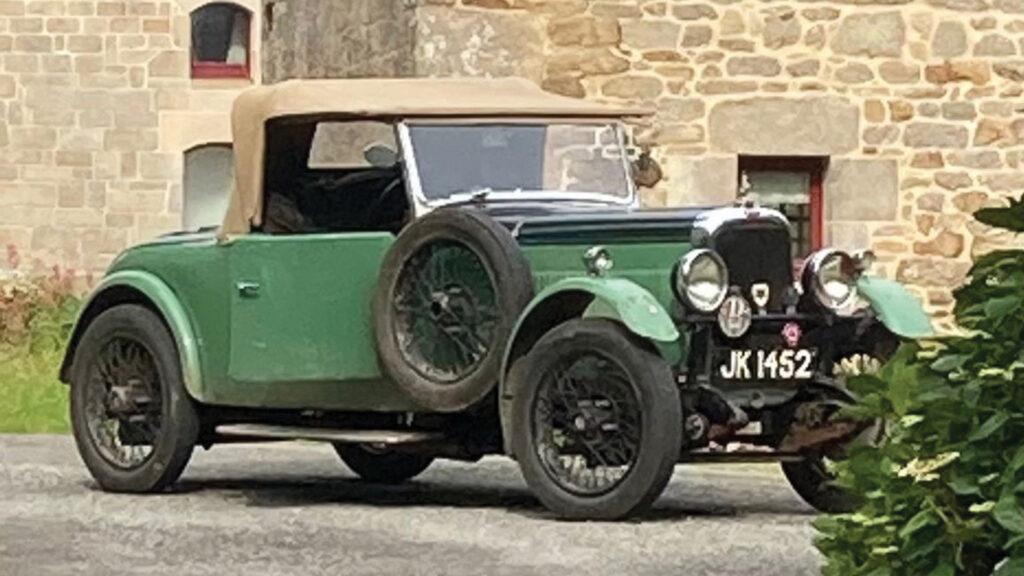
© Andrew Faulkner
Best tractor you’ve had?
Martin: It’s undoubtedly the “Pocket Rocket”, an MF 6290 Excel that we bought with 5,000 hours on the clock.
We paid £14,000 for the tractor in 2015, added another 8,000 hours over the course of eight years, then sold it for £18,000.
On top of that, it was just a great tractor. We did a cog and a synchro in the gearbox when we first had it, and then never touched it again.
It pulled like a train. We only sold it because it didn’t have isobus, and we needed the cash to finance the 6155R.
And the worst?
Martin: It will come as no surprise that it’s the 6490 we mentioned earlier. Almost £20,000 in repair bills over four years – it almost broke me. I was very glad to see the back of it.
Biggest bargain?
Martin: In addition to the “Pocket Rocket”, there are several other candidates. I paid £1,500 for a Case IH 956 in 2005 with 3,000 hours and sold it 13 years later for £5,000 with 12,000 hours. I loved that tractor.
The top of the stack ran red hot, and she made music. What a sound!
Michael: The current 6120M would be right up there, too. We bought it as an insurance write-off with just 90 hours on the clock.
Admittedly we then had to spend some money on a new cab frame – it had been rolled – but we effectively ended up with a new tractor.
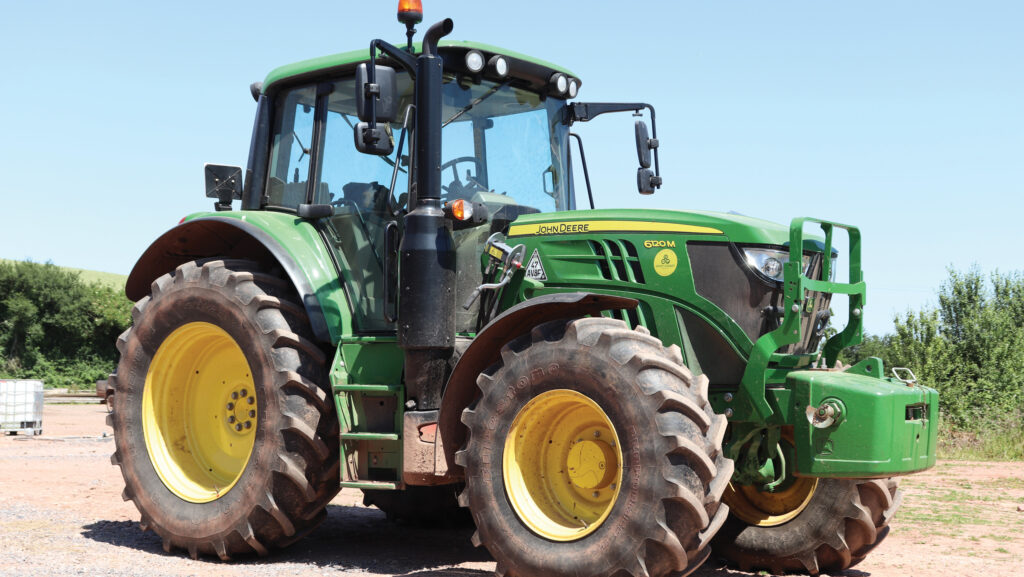
© Andrew Faulkner
Best and worst pieces of technology?
Michael: Autosteer is definitely the best. We’re relatively new adopters, and it makes such a difference on a long day’s drilling. All emissions technology is the worst…it’s to be avoided.
Biggest bugbear?
Martin: Success is no longer about how well you farm. That’s sad. Given today’s huge price fluctuations, it’s more down to how well you time the purchase of your inputs and sale of your outputs.
In other words, a complete lottery.
Kit list
- Tractors: John Deere 6155R (2017), 6120M (2019) and 6200 (1997)
- Combine Claas: Lexion 570 Montana (2007) with 7.6m header
- Sprayer: Bateman RB15 self-propelled (1999) 24m/2,500-litre
- Telehandlers: Matbro TR250 (1997), Matbro Teleram 40D (age unknown)
- Drills: 3m Mzuri Pro-Til 3T (2013), 4m John Deere 750A (2016)
- Cultivation kit: 6m Flexicoil folding rollers, 7.5m Mzuri rake
- Fertiliser spreader: KRM M2 (2005)
- Other kit: 14t Ken Wootton trailers x2, 10t Horn trailers x2, Chieftain low loader, Lucas G Castor 30 feeder/bedder

